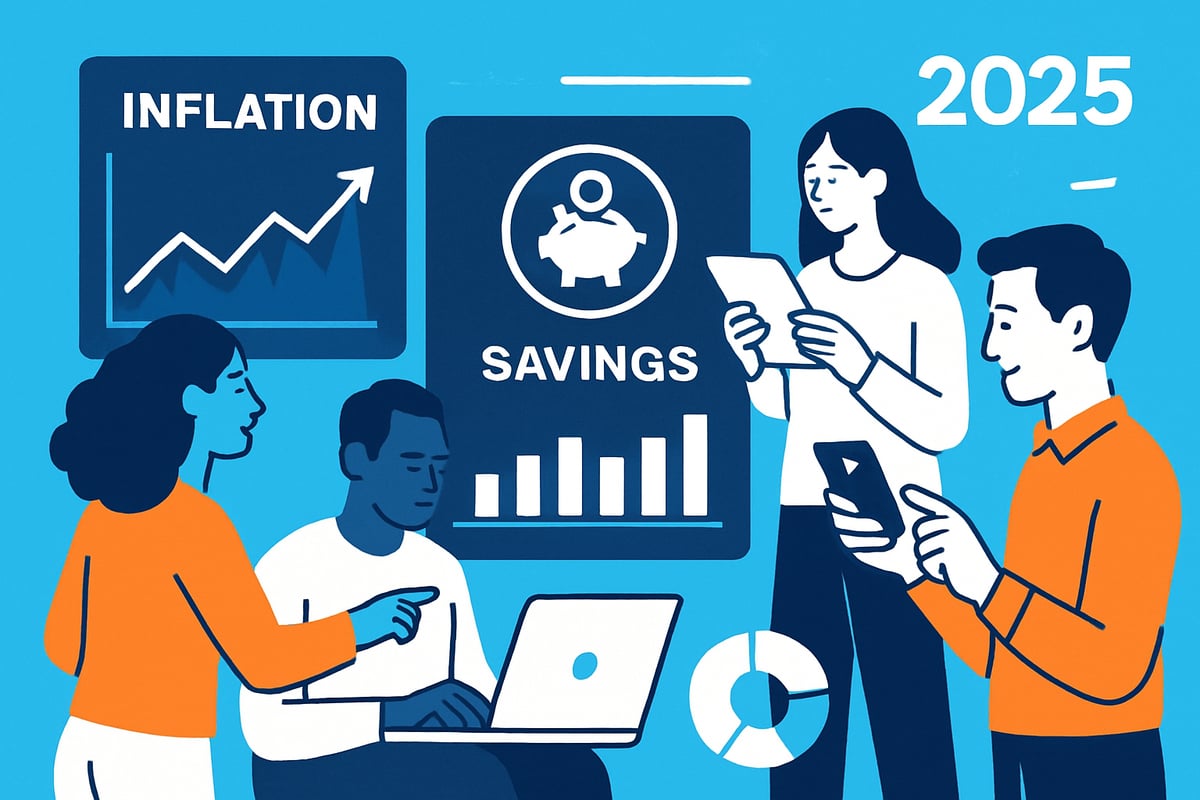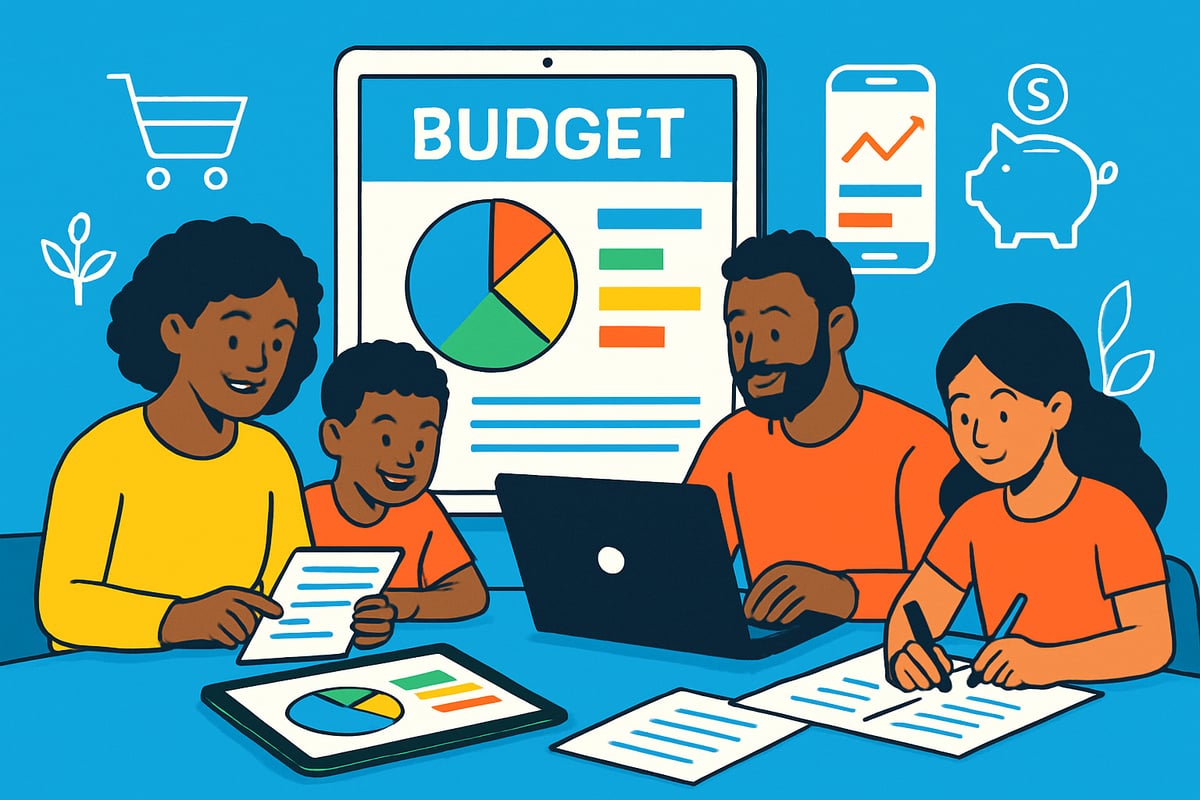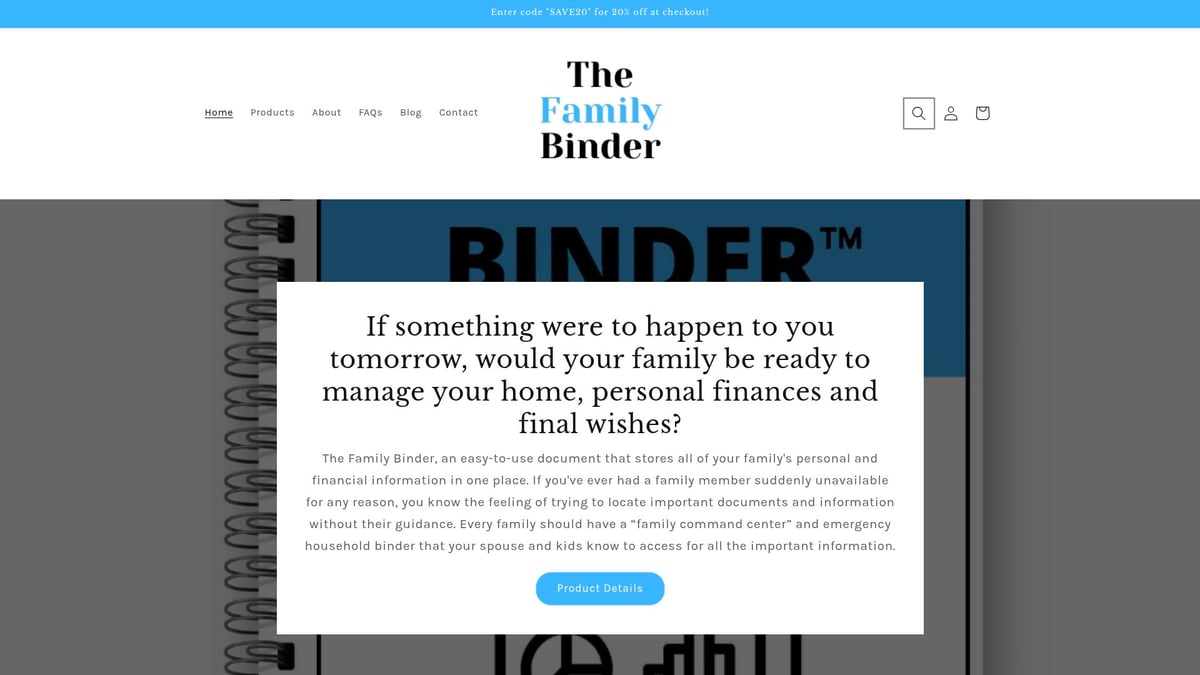Are you ready to take control of your financial future in 2025? The world of personal finance is changing quickly, and knowing how to manage your finances is more important than ever. This essential guide will walk you through practical strategies and tools to help you succeed.
We’ll break down budgeting, saving, investing, debt management, financial technology, and steps to secure your future. Stay ahead of new trends, gain confidence, and discover simple solutions you can put into action today. Let’s get started on your journey to financial empowerment.
Understanding the 2025 Financial Landscape
The financial world is evolving quickly, and to manage your finances effectively in 2025, you need to stay ahead of new trends and challenges. Whether you are just starting out or reevaluating your strategy, understanding the current landscape is essential for making smart decisions.

Key Economic Trends Impacting Personal Finances
In 2025, economic trends will play a critical role in how you manage your finances. Inflation is expected to remain above the Federal Reserve’s 2% target, pushing the cost of living higher. Interest rates may stay elevated, affecting both loan affordability and savings growth.
Remote work and gig economy roles are becoming more mainstream, offering flexibility but also creating income variability. Recent government policy updates, including new tax brackets and retirement incentives, will impact your take-home pay and savings strategies. According to 2024 data, unemployment rates are holding steady, but wage growth is uneven across industries.
To manage your finances well, it’s vital to track these shifts and adjust your approach as needed. Staying informed helps you make proactive choices instead of reactive ones.
The Role of Financial Literacy in 2025
Financial education is more important than ever in this digital-first era. The complexity of new financial products and services means you need a solid foundation to manage your finances with confidence. Only 34% of Americans could answer four out of five basic financial literacy questions correctly in 2024, showing a significant gap in knowledge.
Improving your financial literacy can help you avoid costly mistakes and take advantage of new opportunities. For more insights, check out these US financial literacy statistics 2025 to see where you stand and why education matters.
Stay curious and seek out resources that help you manage your finances as technology and regulations evolve.
Emerging Financial Risks and Opportunities
As you manage your finances in 2025, new risks and opportunities are emerging. Cybersecurity threats are on the rise, with digital fraud cases increasing each year. Protecting your personal data is now a vital part of financial management.
On the upside, digital banking and fintech innovations are opening doors to higher savings rates, instant payments, and AI-driven investment tools. Online-only banks and smart apps can simplify how you manage your finances and maximize growth potential.
Embrace technology, but stay vigilant about security and privacy to protect your hard-earned money.
Demographic Shifts and Their Impact
Demographic changes are shaping how you manage your finances. The aging population is putting more focus on retirement planning and healthcare costs. At the same time, Millennials and Gen Z will make up 75% of the workforce by 2025, bringing fresh perspectives and a drive for financial independence.
Younger generations are embracing side hustles and digital income streams, while older adults are prioritizing security and estate planning. These shifts influence everything from savings goals to investment choices as you manage your finances across life stages.
Being aware of these trends helps you tailor your strategies for long-term success.
Adapting to Change: Why Proactive Management Matters
The ability to adapt is crucial if you want to manage your finances effectively in 2025. Failing to adjust your strategies can lead to rising debt, missed investment opportunities, and unnecessary financial stress.
Take action by reviewing your financial plan regularly. Staying proactive means you can respond to changes, seize new opportunities, and build lasting security for yourself and your loved ones.
Step 1: Assessing Your Current Financial Health
Before you can confidently manage your finances in 2025, you need a clear picture of where you stand. This step is all about building a solid foundation. By understanding your income, expenses, assets, and debts, you set yourself up for smarter decisions and greater control over your money.

Creating a Comprehensive Financial Inventory
Start by gathering every detail about your financial life. Make a list of all income sources, including your salary, freelance work, and any passive earnings. Next, catalog your assets—think savings, investments, property, and vehicles. Don’t forget to record all liabilities, like loans, credit card balances, or any outstanding bills.
Using digital tools or apps makes this process easier. For example, a monthly net worth tracker can help you see progress over time. If you want to streamline this step, consider Financial planning binder strategies to organize and manage your finances efficiently. A complete financial inventory is the first step to taking charge.
Analyzing Spending Patterns and Identifying Leaks
Once you have your financial inventory, it’s time to dig into your spending habits. Review your bank and credit card statements from the past few months. Look for recurring charges, subscriptions, and regular expenses. Identify which costs are essential and which are discretionary.
Surprisingly, Americans spend an average of $1,200 each year on unused subscriptions. That’s money that could be better used to manage your finances more effectively. Categorize your spending to spot leaks. Cancel or reduce expenses that don’t add value. This simple audit can free up cash for your bigger goals.
Setting Realistic Short- and Long-Term Goals
Define where you want to go next. Use the SMART framework: Specific, Measurable, Achievable, Relevant, and Time-bound. Maybe your short-term goal is to save $3,000 for an emergency fund in 12 months. A long-term goal could be buying a home or retiring early.
Align your goals with your current life stage. If you’re just starting out, focus on building savings and reducing debt. As your situation changes, so should your goals. When you manage your finances with clear objectives, you set yourself up for steady progress and fewer surprises.
Calculating Your Net Worth and Debt-to-Income Ratio
Your net worth is the difference between your assets and your liabilities. Add up what you own, subtract what you owe, and track this number every month. This gives you a snapshot of your financial health.
Next, calculate your debt-to-income ratio. Divide your total monthly debt payments by your monthly income. Lenders often look for a ratio below 36 percent. Staying within industry benchmarks makes it easier to qualify for loans and keep your finances healthy. When you manage your finances by tracking these numbers, you’re always ready to make informed decisions.
Step 2: Building a Future-Proof Budget
Building a future-proof budget is your best defense against financial uncertainty. As you look to manage your finances in 2025, the right budget will help you stay on track, adapt to changes, and achieve your goals with confidence. Let’s break down the steps to make budgeting simple, smart, and stress-free.

Choosing the Right Budgeting Method for 2025
Selecting a budgeting method that fits your lifestyle is the first step to manage your finances effectively. With so many options available, it’s important to compare a few popular approaches:
| Method | Description | Best For |
|---|---|---|
| Zero-Based | Assigns every dollar a job | Detail-oriented planners |
| 50/30/20 Rule | 50% needs, 30% wants, 20% savings | Simple, flexible budgets |
| Envelope System | Cash in envelopes for each category | Hands-on, visual learners |
Digital tools are making budgeting easier than ever. AI-powered apps can now analyze your habits, predict upcoming expenses, and automate adjustments. For a practical approach, consider using a Budget planner binder guide to organize and track your budget in one place. This ensures you manage your finances proactively and with clarity.
Allocating for Fixed, Variable, and Irregular Expenses
A future-proof budget divides your expenses into three main categories: fixed, variable, and irregular. Fixed expenses, like rent or mortgage, stay the same each month. Variable expenses, such as groceries or utilities, may change but occur regularly. Irregular expenses, like car repairs or holiday gifts, happen less often yet can disrupt your budget if unplanned.
To manage your finances well, create a table listing each expense type and review your past spending to estimate future costs. Remember, the average household spends 33% of income on housing. Planning for annual or unexpected costs makes your budget more resilient and helps you avoid surprises.
Incorporating Savings and Investments into Your Budget
To truly manage your finances for the long term, you need to pay yourself first. Prioritize savings and investments by setting up automatic transfers to dedicated accounts. This could mean rounding up purchases and depositing the difference, or scheduling monthly deposits into high-yield savings or investment platforms.
By including savings and investments as non-negotiable line items, you build wealth and financial security over time. Treat these contributions just like any other bill, and watch your progress grow as you consistently manage your finances.
Adjusting Your Budget for Inflation and Life Changes
Inflation and major life events can quickly throw your budget off balance. As prices rise in 2025, review your budget quarterly and make necessary adjustments. Factor in upcoming changes like marriage, children, or a new job.
To manage your finances during transitions, update your expense estimates and savings goals regularly. Flexibility is key. A future-proof budget isn’t set in stone but adapts as your life evolves.
Tracking Progress and Staying Accountable
Regularly reviewing your budget is essential to manage your finances successfully. Use visual tools, such as charts or dashboards, to monitor your progress and stay motivated. Partner with a friend or family member as an accountability buddy for added support.
Remember, your budget is a living document. By tracking and adjusting, you can confidently manage your finances now and in the future.
Step 3: Smart Saving and Emergency Planning
Building a solid savings foundation is a key part of how you manage your finances in 2025. Smart saving habits and a well-prepared emergency plan can give you peace of mind, even when life throws a curveball. Let’s explore how to create a safety net, set meaningful savings goals, use technology to your advantage, and shield your money from inflation and risk.
Establishing an Emergency Fund in 2025
An emergency fund is your financial safety net, designed to help you manage your finances when unexpected expenses arise. Experts recommend setting aside three to twelve months of living costs, depending on your job stability and personal needs.
Keep your emergency fund in a high-yield savings account or a money market fund for easy access and better interest. According to Bankrate, 57% of Americans cannot cover a $1,000 emergency, highlighting the urgent need for this crucial step. Starting small is fine — regular contributions will help you build up your fund over time.
By making your emergency fund a priority, you protect yourself from relying on credit cards or loans during tough times. This is one of the smartest ways to manage your finances and reduce stress.
Optimizing Savings Strategies for Different Goals
Saving is not a one-size-fits-all approach. To effectively manage your finances, create separate savings buckets for short-term and long-term goals. Short-term goals might include a vacation or new gadgets, while long-term goals could be a home down payment or early retirement.
Consider using certificates of deposit (CDs) or high-yield accounts for longer-term savings, as these often offer better returns. For short-term goals, a regular savings account keeps your money accessible. For example, you might save monthly for a holiday, but invest more for a house purchase in five years.
Matching your savings vehicles to your goals helps you manage your finances with intention and clarity. Review your progress often and adjust your plan as your priorities shift.
Automating Your Savings for Consistency
Consistency is key if you want to manage your finances successfully. Automate your savings by setting up direct deposit splits or scheduling recurring transfers on payday. This “set and forget” approach removes the temptation to spend what you should be saving.
Studies show that automated savers are 42% more likely to reach their goals. For even better results, use digital tools or apps that round up purchases and deposit the difference into savings. Want more structure? Explore Family financial planner tips to help you set budgets, track expenses, and keep your savings on target.
Automating your plan means you are always working toward your goals, making it easier to manage your finances without constant effort.
Protecting Your Savings from Inflation and Risk
Inflation can quietly erode your savings, so it’s vital to protect your hard-earned money as you manage your finances. Look for inflation-beating options like high-yield accounts or Treasury Inflation-Protected Securities (TIPS) to keep your savings growing.
Diversifying your savings is also important. Combine insured savings accounts with low-risk investments to strike a balance between safety and growth. For example, you might keep your emergency fund in a money market account while putting extra cash into a short-term bond fund.
Regularly review your strategy to ensure your savings keep pace with rising costs. This proactive approach helps you manage your finances with confidence and resilience.
Step 4: Debt Management and Credit Optimization
Effectively managing your debt and optimizing your credit are critical steps to manage your finances in 2025. With rising living costs and evolving lending options, having a clear debt strategy can save you money and reduce financial stress. Let’s break down actionable steps to help you take control.
Understanding Your Debt Profile
Start by mapping out every debt you owe. Make a list of all your balances, interest rates, minimum payments, and due dates. This will give you a snapshot of your current situation and help you manage your finances with intention.
There are two main categories:
- Good debt: Student loans, mortgages, or business loans that build wealth over time.
- Bad debt: High-interest credit cards or payday loans that drain your resources.
Knowing the difference helps you prioritize what to pay off first. Review your statements monthly to avoid surprises and track your progress.
Strategies to Pay Down Debt Effectively
Choosing the right payoff strategy can make a huge difference. Two popular approaches are the debt snowball and avalanche methods.
| Method | Focus | Benefit |
|---|---|---|
| Snowball | Smallest balance first | Quick wins |
| Avalanche | Highest interest rate first | Save on interest |
Consider consolidation or refinancing options, especially if you can lock in a lower interest rate in 2025. The average U.S. household credit card debt is $7,951, so adopting a methodical approach will help you manage your finances and reduce debt faster.
Improving and Monitoring Your Credit Score
Your credit score impacts your ability to borrow and the rates you receive. Factors like payment history, credit utilization, and account age all play a role.
Use free credit monitoring tools or apps to stay on top of changes. In 2025, digital platforms make it easier than ever to access real-time updates and tips. According to Financial literacy statistics in the U.S. 2025, more Americans are adopting digital tools to manage their finances and improve credit awareness.
Check your credit report at least once a year, and dispute any inaccuracies you find for a healthier financial profile.
Avoiding Common Debt Traps and Predatory Lending
Not all loans are created equal. Watch out for warning signs like:
- Very high interest rates
- Hidden fees or balloon payments
- Vague or unclear contract terms
Read every loan agreement carefully before signing. Payday loans and high-interest products can quickly spiral out of control, making it harder to manage your finances. If an offer seems too good to be true, it probably is.
Responsible Use of Credit in a Digital Age
Credit cards can be powerful tools if used wisely. Set up alerts for due dates, and create spending limits to avoid overspending. Use cards for rewards or purchase protection, but always pay off the full balance each month.
Responsible use of credit is essential as you manage your finances in an increasingly digital world. Automation and regular reviews keep you on track and protect your financial health.
Step 5: Investing for Growth and Security
Investing is a core pillar when you manage your finances for the future. In 2025, the investment landscape blends proven strategies with emerging opportunities, allowing you to grow wealth and protect your financial well-being. Whether you are a first-time investor or looking to refine your approach, understanding your options is crucial.
Investment Options for 2025: What’s New and What’s Proven
Choosing the right mix of investments is key when you manage your finances in a changing world. Traditional assets like stocks, bonds, mutual funds, and ETFs remain solid choices for building wealth. However, 2025 introduces more digital assets, robo-advisors, and AI-driven investment apps that make investing accessible and data-driven.
Here’s a quick comparison:
| Option | Pros | Cons |
|---|---|---|
| Stocks/ETFs | High growth potential | Volatile, market risk |
| Bonds | Stable income, lower risk | Lower returns |
| Digital Assets | Innovation, diversification | Regulatory uncertainty |
| Robo-Advisors | Ease, automation, lower fees | Less human guidance |
Exploring these options helps you manage your finances with confidence and adaptability.
Risk Tolerance and Asset Allocation
Before you invest, assess your risk tolerance. Are you comfortable with market swings, or do you prefer steady, predictable returns? Your age, goals, and timeline all play a role.
Diversification is a powerful tool to manage your finances and reduce risk. Consider spreading your money across:
- Stocks for growth
- Bonds for stability
- Cash for liquidity
- Digital assets for innovation
According to a Vanguard study, diversified portfolios can reduce risk by 30%. Regularly review your allocations and adjust as your goals evolve.
Retirement Planning: IRAs, 401(k)s, and Beyond
Securing your retirement is a vital part of how you manage your finances. In 2025, maximize contributions to employer-sponsored plans like 401(k)s, and explore IRAs for tax advantages. New account types and higher contribution limits may be available, so stay updated.
Key retirement accounts:
- 401(k): Employer match, tax deferral
- Roth IRA: Tax-free growth
- SEP/SIMPLE IRA: For self-employed or gig workers
Only 64% of Americans are saving for retirement. Start early, automate contributions, and review your plan annually to stay on track.
Investing for Short-Term vs. Long-Term Goals
Not all investment goals are the same. When you manage your finances, match your investment strategy to your timeline. For long-term goals, like retirement or college savings, consider index funds or growth stocks. For short-term needs, like a house down payment, choose bonds or high-yield savings.
Example strategies:
- Index funds for long-term growth
- Bonds for near-term stability
- CDs for planned expenses within 3 years
Aligning each dollar with a clear purpose helps you manage your finances efficiently and with less stress.
Monitoring and Adjusting Your Portfolio
Your investments need regular attention. Review your portfolio quarterly, rebalance if needed, and stay informed about market trends. This habit helps you spot opportunities and avoid unnecessary risk.
For a streamlined approach, consider Simplifying taxes and financial reviews to ensure your investments and tax planning work together. Leveraging digital tools or financial advisors can make these reviews easier and more effective.
Stay proactive, and you’ll build security and growth as you manage your finances for 2025 and beyond.
Step 6: Leveraging Technology for Financial Success
Technology has transformed how you manage your finances, making it easier, faster, and more secure. In 2025, embracing digital solutions is key to staying ahead and building a resilient financial future. Let’s explore how you can leverage the latest tools to elevate your money management.
Digital Banking and Fintech Innovations
Digital banks and fintech platforms have redefined how you manage your finances. With online-only banks, you benefit from higher yields, lower fees, and seamless access to your accounts 24/7. These platforms offer features like instant transfers, customizable budgeting tools, and real-time alerts.
Mobile banking apps simplify everyday tasks. You can deposit checks, pay bills, and track your spending, all from your phone. Digital wallets let you make quick, secure payments in-store or online.
- Higher interest rates on savings
- No hidden charges
- Easy account setup
By integrating these innovations, you ensure your ability to manage your finances efficiently and securely.
Automating Bill Payments and Financial Tasks
Automation is a game-changer when you manage your finances. Set up autopay for recurring bills like rent, utilities, and subscriptions. This reduces the risk of late payments and helps protect your credit score.
Automated reminders and scheduled transfers keep you on track with savings and investment goals. Many banks and apps allow you to customize payment dates, so your cash flow stays balanced.
- Autopay for regular expenses
- Scheduled savings transfers
- Custom alerts for due dates
With automation, you spend less time worrying about deadlines and more time focusing on your goals. This hands-off approach lets you manage your finances proactively.
Using AI and Analytics for Smarter Decisions
Artificial intelligence and predictive analytics are revolutionizing how you manage your finances. AI-powered tools analyze your spending habits, forecast future expenses, and offer personalized advice tailored to your financial goals.
Some apps send alerts about unusual transactions or highlight savings opportunities you might overlook. Predictive models can even suggest optimal times to invest or cut back on spending. As financial products become more complex, being informed is vital. According to Financial literacy statistics 2025, improving your knowledge is key to making smart choices in this evolving landscape.
By adopting these technologies, you can manage your finances with greater confidence and clarity.
Safeguarding Your Financial Data
Protecting your information is essential as you manage your finances online. Use strong, unique passwords for all financial accounts, and enable two-factor authentication whenever possible. Stay vigilant for phishing emails and suspicious links.
Banks and fintech apps now offer advanced security features, including biometric logins and instant fraud alerts. Regularly review your account activity and report anything unusual right away.
- Strong passwords for each account
- Two-factor authentication
- Monitor accounts for suspicious activity
Taking these steps helps you manage your finances securely and gives you peace of mind in the digital age.
Step 7: Securing Your Financial Future
Securing your financial future is the final, crucial step as you manage your finances for long-term stability. This stage goes beyond daily money habits, focusing on protection, legacy, and peace of mind. By taking proactive steps in insurance, estate planning, and organization, you ensure your loved ones and assets are safeguarded in any situation.
Insurance and Risk Management Strategies
To manage your finances effectively, protecting yourself with the right insurance is essential. Health, life, disability, and property insurance act as safety nets for unexpected events. Assess your current policies and coverage levels to ensure they meet your needs for 2025.
Consider bundling policies for possible discounts and easier management. Review your insurance annually or after major life changes, like a new home or family member. Adequate coverage helps you manage your finances during emergencies, reducing the risk of financial setbacks.
Estate Planning and Legacy Building
Estate planning is a vital part of how you manage your finances, regardless of age or wealth level. Creating a will, establishing trusts, and updating beneficiary designations ensure your wishes are honored and your loved ones are protected.
Only 32% of Americans have an estate plan, leaving many families unprepared. Keep your documents current as life evolves. Simple steps today can prevent confusion and legal challenges later, making it easier for your family to manage your finances if the unexpected happens.
Organizing and Storing Important Financial Documents
Being organized is a game-changer when you manage your finances. Set up a central repository for all key documents, such as bank statements, insurance records, tax returns, and legal papers.
You can use a secure home safe for physical copies and encrypted cloud storage for digital files. Make a list of accounts, passwords, and contacts, and let a trusted person know how to access them. This organization lets you manage your finances efficiently and provides clarity during emergencies.
How The Family Binder Can Simplify Your Financial Organization
The Family Binder is a powerful tool to help manage your finances and keep everything in one place. This fillable PDF planner guides you in organizing accounts, insurance, debts, assets, and emergency contacts.

Families, caregivers, and those planning for transitions find it especially helpful. The Family Binder reduces stress by making vital information easy to access for your loved ones. It complements legal documents, offering clear instructions for next-of-kin, and is editable for lifetime use. Using The Family Binder to manage your finances brings peace of mind, especially during transitions or emergencies.
After walking through all these steps to get your finances in order for 2025, you might be wondering how to keep everything organized and easy to find. That’s where having a simple system makes all the difference. With The Family Binder, you can pull together your financial accounts, insurance details, and even estate plans all in one place. I love how it guides you through each section, so nothing gets missed—and your loved ones can easily access what they need in any situation. If you’re ready to take the stress out of managing your family’s important info, Download Now.

